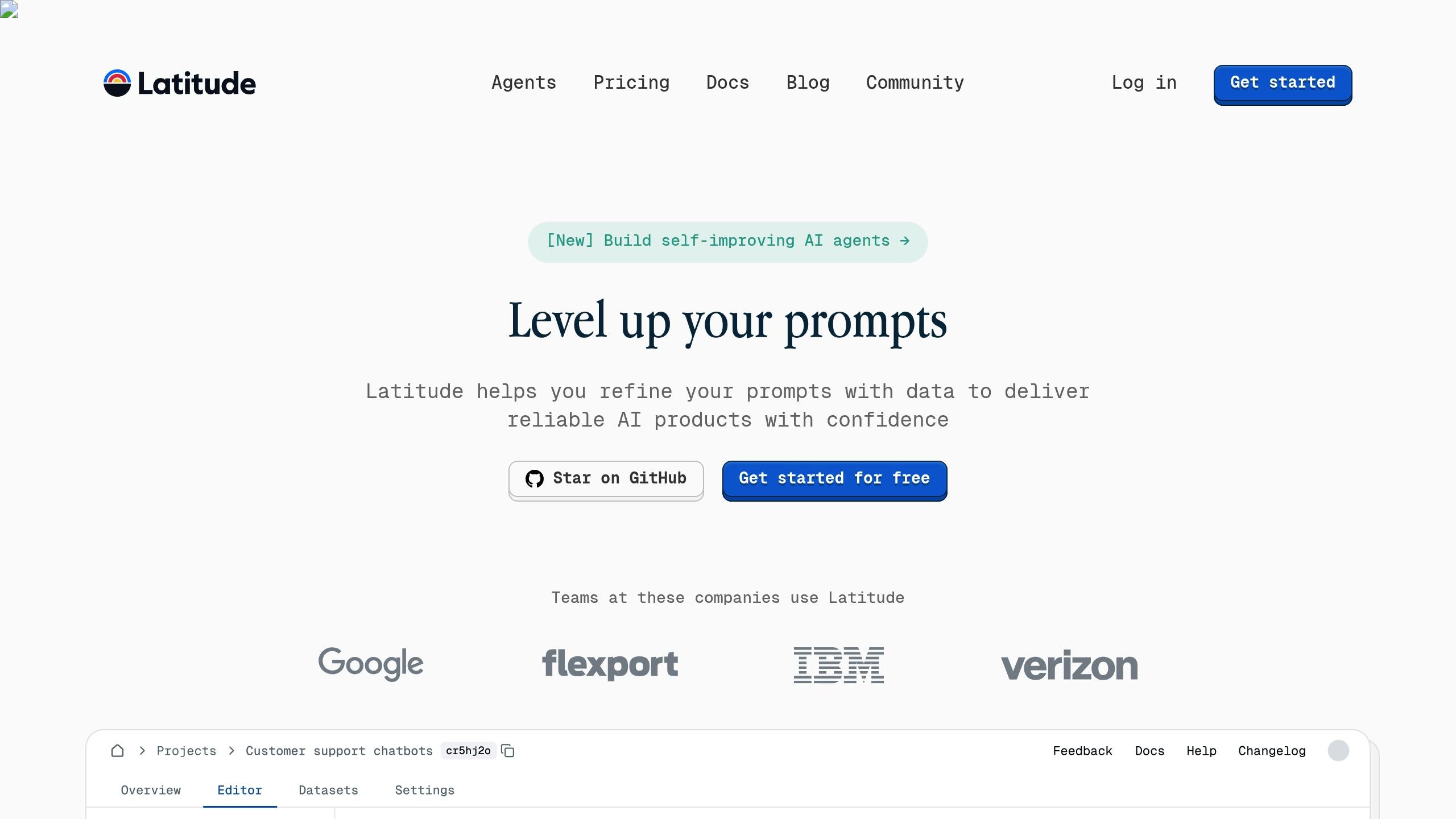Ultimate Guide to Event-Driven AI Observability
Explore the essential strategies for event-driven AI observability to enhance performance, ensure compliance, and detect issues early.

Event-driven AI observability ensures AI systems run smoothly by monitoring and analyzing event data like model predictions, system interactions, and performance metrics. Here's why it matters:
- Early Issue Detection: Prevents downtime and enhances user experience.
- Performance Optimization: Reduces costs and improves resource use.
- Model Insights: Enhances reliability and outcomes.
- Compliance: Helps meet regulations and manage risks.
Key Challenges:
- Asynchronous Workflows: Complex cause-effect tracing.
- Data Volume: Managing large-scale data efficiently.
- System Distribution: Monitoring across multiple services.
- Real-Time Needs: Fast insights for critical decisions.
Core Monitoring Components:
- Infrastructure: Tracks system health (CPU, memory, latency).
- Model Performance: Measures AI behavior (accuracy, inference time).
- Event Processing: Monitors message flow (throughput, delays).
For effective observability, integrate tools for real-time data tracking, anomaly detection, and distributed tracing. Platforms like Latitude simplify monitoring for AI systems, especially large language models (LLMs), by tracking prompts, responses, and performance.
Main Concepts of AI Observability
Setting Up System Monitoring
To effectively monitor AI systems, track both general system health and AI-specific metrics. Focus on three key monitoring components:
| Component | Purpose | Key Metrics |
|---|---|---|
| Infrastructure Monitoring | Tracks overall system health | CPU usage, memory usage, network latency |
| Model Performance | Evaluates AI behavior | Inference time, prediction accuracy, confidence scores |
| Event Processing | Monitors message flow | Event throughput, processing delays, queue depth |
Establish clear baselines to quickly detect anomalies. Use tools that can monitor real-time metrics while also analyzing historical trends. This combination helps identify patterns and ensures accurate data collection for further analysis.
Data Collection and Analysis
Avoid overwhelming your storage by using selective sampling to focus on critical data.
Key strategies for data analysis include:
- Real-time Processing: Use stream processing to gain immediate insights.
- Batch Analysis: Schedule regular reviews of historical data for deeper understanding.
- Correlation Analysis: Identify relationships between distributed system components.
Understanding how events interact within your system is crucial. To manage the collected data effectively, ensure that your storage solutions are structured and optimized for your needs.
Data Management Methods
Organize your data storage into tiers:
- Hot data (0–7 days) stored in high-performance systems for quick access.
- Warm data (8–30 days) stored in standard systems.
- Cold data (30+ days) archived for cost savings.
Follow these best practices for efficient data management:
| Practice | Implementation | Impact |
|---|---|---|
| Data Compression | Use time-series compression techniques | Saves storage space |
| Retention Policies | Set clear rules for data lifecycles | Optimizes storage usage |
| Data Aggregation | Summarize key metrics | Speeds up queries |
Focus on collecting data that directly informs system performance and decision-making. Not every event needs to be stored permanently - identify the most relevant data for your goals and manage storage accordingly.
Observability Tools and Systems
Modern event-driven AI systems depend on solid monitoring solutions to track and analyze event data effectively.
Open-Source Monitoring Tools
When setting up observability for event-driven AI systems, it's essential to choose tools tailored for AI-specific metrics and event streams. Look for tools with the following core features:
| Feature Category | Key Capabilities | Why It Matters |
|---|---|---|
| Data Collection | Real-time event tracking, custom metrics | Enables detailed system monitoring |
| Visualization | Interactive dashboards, custom alerts | Speeds up pattern recognition |
| Analysis | Anomaly detection, trend tracking | Helps identify issues proactively |
| Integration | API support, plugin extensibility | Simplifies tool interoperability |
These features are particularly helpful when working with AI systems, especially large language models (LLMs).
Latitude for LLM Monitoring

For LLM-specific monitoring, open-source tools like Latitude offer advanced capabilities that address challenges unique to these systems. Latitude's platform enables teams to:
- Track prompt performance and version history
- Monitor response quality and consistency
- Evaluate prompt engineering strategies
- Support production-grade LLM operations
Its collaborative features also allow engineers and domain experts to work together, ensuring the system runs smoothly and efficiently.
Connecting with AI Frameworks
To integrate observability into AI frameworks, consider the following steps:
1. Framework Integration
Link your monitoring tools to the AI framework's logging system. This connection ensures automatic tracking of key metrics like inference times and prediction accuracy.
2. Event Stream Processing
Deploy processors to handle:
- Monitoring model inputs and outputs
- Collecting performance metrics
- Tracking resource usage
- Analyzing error rates
3. Metric Aggregation
Centralize your data collection by combining:
- Framework-specific performance metrics
- System resource data
- Custom business KPIs
These steps help create a unified view of your system's performance, making it easier to identify and resolve issues.
Setting Up AI System Monitoring
Monitoring an AI system involves capturing event data, tracking how events move through the system, and evaluating the system's performance.
Recording Event Data
| Component | Focus Area | Metrics to Monitor |
|---|---|---|
| Event Logging | Structured data storage | Timestamp, event type, payload size |
| Data Persistence | Optimizing storage | Retention period, compression ratio |
| Event Context | Adding metadata | Source system, user context, environment |
| Data Quality | Ensuring accuracy | Error rate, data completeness |
Track both system-level events and AI-specific interactions. Use storage solutions capable of managing large event streams without compromising data integrity.
The next step is understanding how events flow across the system.
Event Flow Tracking
-
Event Pipeline Monitoring
Keep an eye on events as they move through the pipeline:- Processing latency
- Queue depths and backlogs
- Success rates for processing
- Overall system throughput
-
Service Communication Tracking
Use distributed tracing to monitor interactions between services:- Patterns of inter-service communication
- Efficiency of event routing
- Service dependencies
- Identification of bottlenecks
-
Event Correlation
Use correlation IDs to link related events:- Track transactions from start to finish
- Pinpoint root causes of issues
- Improve performance
- Simplify debugging
Once event flow tracking is in place, focus on performance metrics to measure the system's effectiveness.
AI Performance Metrics
Track these metrics to evaluate AI and large language model (LLM) performance:
| Metric Type | Key Indicators |
|---|---|
| Response Time | Inference latency, processing speed |
| Resource Usage | CPU/GPU load, memory usage |
| Model Performance | Accuracy, precision, recall |
| System Health | Error rates, uptime |
For LLMs, include additional metrics such as token processing speed, prompt completion accuracy, response quality, and performance by model version.
Ensure your monitoring setup can handle real-time data collection and analysis without slowing the system. Implement automated alerts for unusual metric deviations to address issues before they escalate.
Advanced Monitoring Methods
Advanced monitoring helps shed light on complex AI behavior, offering tools to better understand how AI systems make decisions and respond to changes.
Making AI Decisions Clear
To understand how AI systems arrive at their decisions, consider these techniques:
- Event Correlation: Use unique IDs to link related events and follow their flow.
- Decision Logging: Record intermediate outputs, including confidence scores, to track decision-making steps.
- Model Versioning: Keep a record of updates, including parameter changes and model revisions.
- Data Lineage: Trace the origins of input data and any transformations it undergoes.
For tools like Latitude, logging prompt iterations and responses can help clarify how adjustments impact large language model (LLM) outputs.
Detecting System Changes
Real-time monitoring can catch subtle shifts that may impact performance. Focus on these areas:
- Data Drift: Identify when inputs deviate from established baselines.
- Performance Decay: Watch for ongoing drops in accuracy or efficiency.
- Resource Usage: Track how system resources are being utilized.
- Response Time: Monitor for increases in latency.
Setting up automated alerts for these metrics allows you to address potential issues quickly, minimizing disruption for end users.
Pinpointing Problems
Troubleshooting event-driven AI systems requires a step-by-step approach:
- Isolate the Issue: Start with the affected component and trace events backward to locate the problem.
- Analyze Event Patterns: Look for anomalies in input data, resource usage, timing, or system integration.
- Implement Solutions: Address the root cause by adjusting model parameters, optimizing resource allocation, refining validation processes, or improving error handling.
For LLM systems, tracking prompt iterations and monitoring output quality are essential for maintaining consistent performance.
These methods go beyond basic monitoring, providing a clearer view of your system's inner workings and ensuring reliable operation.
Guidelines and Future Direction
Building for Observability
When designing systems, it's crucial to prioritize observability from the start. This means embedding monitoring capabilities directly into your architecture and defining clear requirements for tracking performance. For LLM (Large Language Model) applications, make sure to monitor inputs, outputs, and performance metrics at critical points.
Here are some practices to consider:
- Standardized Event Schema: Use consistent event formats that include timestamps, user context, and system state.
- Distributed Tracing: Assign trace IDs to track requests end-to-end across the system.
- Automated Instrumentation: Set up automated tools to collect performance metrics efficiently.
- Data Storage Integration: Ensure alignment with your existing data management practices.
Platforms like Latitude simplify this process by providing built-in tools for monitoring LLM performance, including tracking prompt iterations and system behavior.
Ongoing System Checks
Regular monitoring is essential for maintaining visibility into your AI systems. Start by establishing baseline metrics that define normal operations, then configure automated alerts to flag deviations that could signal issues.
Focus your monitoring efforts on these areas:
- Performance Metrics: Keep an eye on response times, throughput, and error rates.
- Resource Utilization: Monitor CPU, memory, and network usage to avoid bottlenecks.
- Model Behavior: Track prediction accuracy, confidence levels, and shifts in input patterns.
- User Experience: Measure request success rates and analyze interaction trends.
It's also important to conduct periodic reviews of your monitoring setup. These reviews help identify gaps, refine thresholds, and ensure your system evolves in step with operational needs.
New Monitoring Standards
AI observability is advancing, with emerging trends reshaping how organizations maintain and scale their systems. Some noteworthy developments include:
- Federated Monitoring: Combines data from multiple deployments while maintaining privacy safeguards.
- Automated Root Cause Analysis: Pinpoints performance issues and anomalies without manual intervention.
- Contextual Monitoring: Integrates business and technical metrics to deliver actionable insights.
- Real-time Model Analysis: Tracks model drift and performance issues directly in production environments.
These evolving standards are transforming how businesses approach AI monitoring, making it easier to identify problems early and optimize system performance effectively.
Conclusion
Main Points
When it comes to event-driven AI observability, focus on these three core areas:
System Architecture
- Build observability into AI systems from the start.
- Use standardized methods for tracking events.
- Set up thorough monitoring frameworks.
Data Management
- Collect and analyze event data systematically.
- Keep detailed audit trails for AI decisions.
- Ensure data is stored and retrieved efficiently.
Monitoring Strategy
- Use automated tools for consistent monitoring.
- Establish baseline metrics to measure performance.
- Set up alerts to address issues early.
These principles can serve as a solid starting point for your observability efforts.
Getting Started
Want to implement AI observability in your organization? Here's how:
- Assess your current monitoring setup.
- Identify key performance indicators (KPIs).
- Select tools that align with your goals.
For teams working with Large Language Models, Latitude offers built-in monitoring features that simplify the process. Their tools help you track model performance, manage prompts, and maintain clear oversight of your AI workflows.
